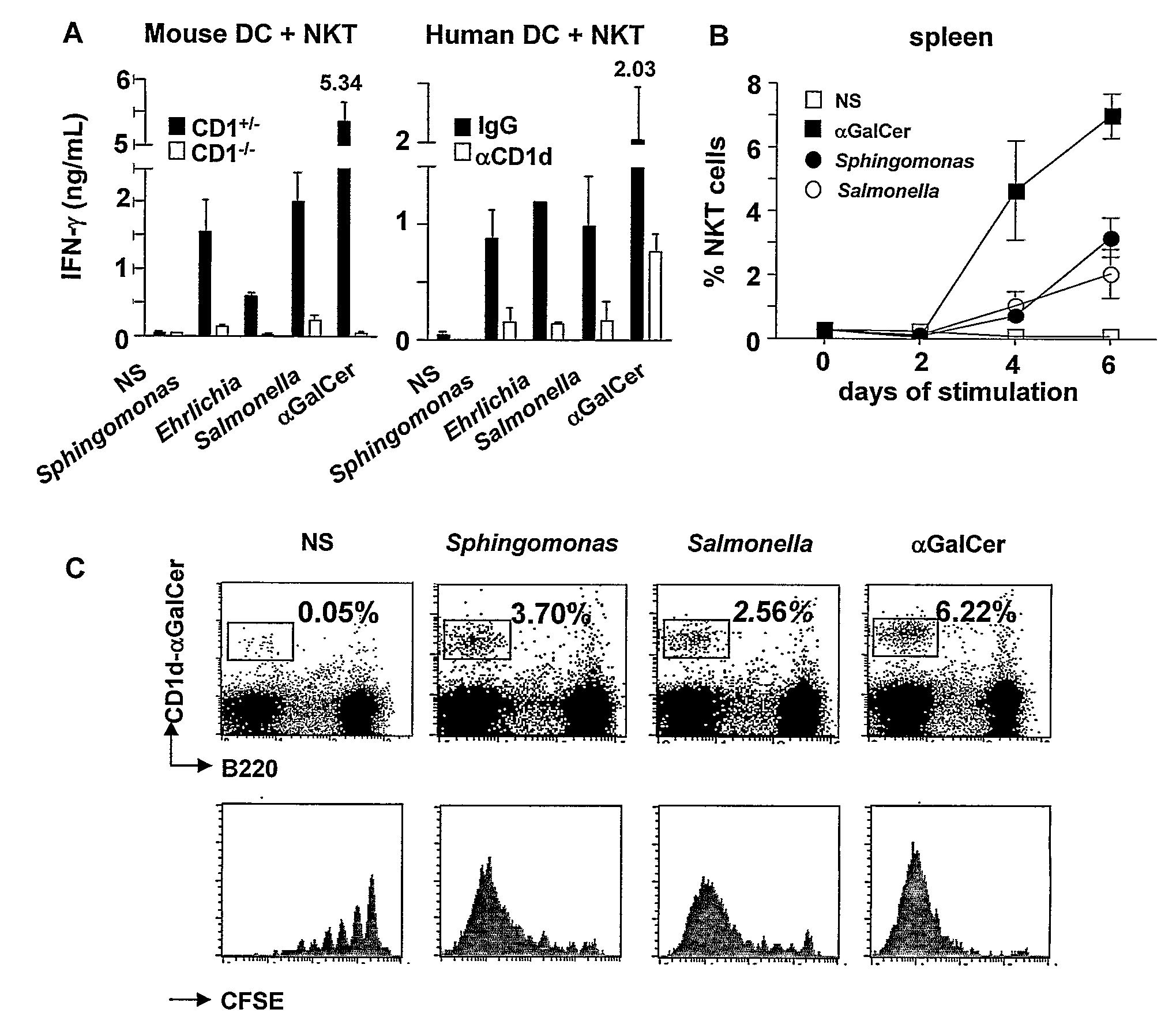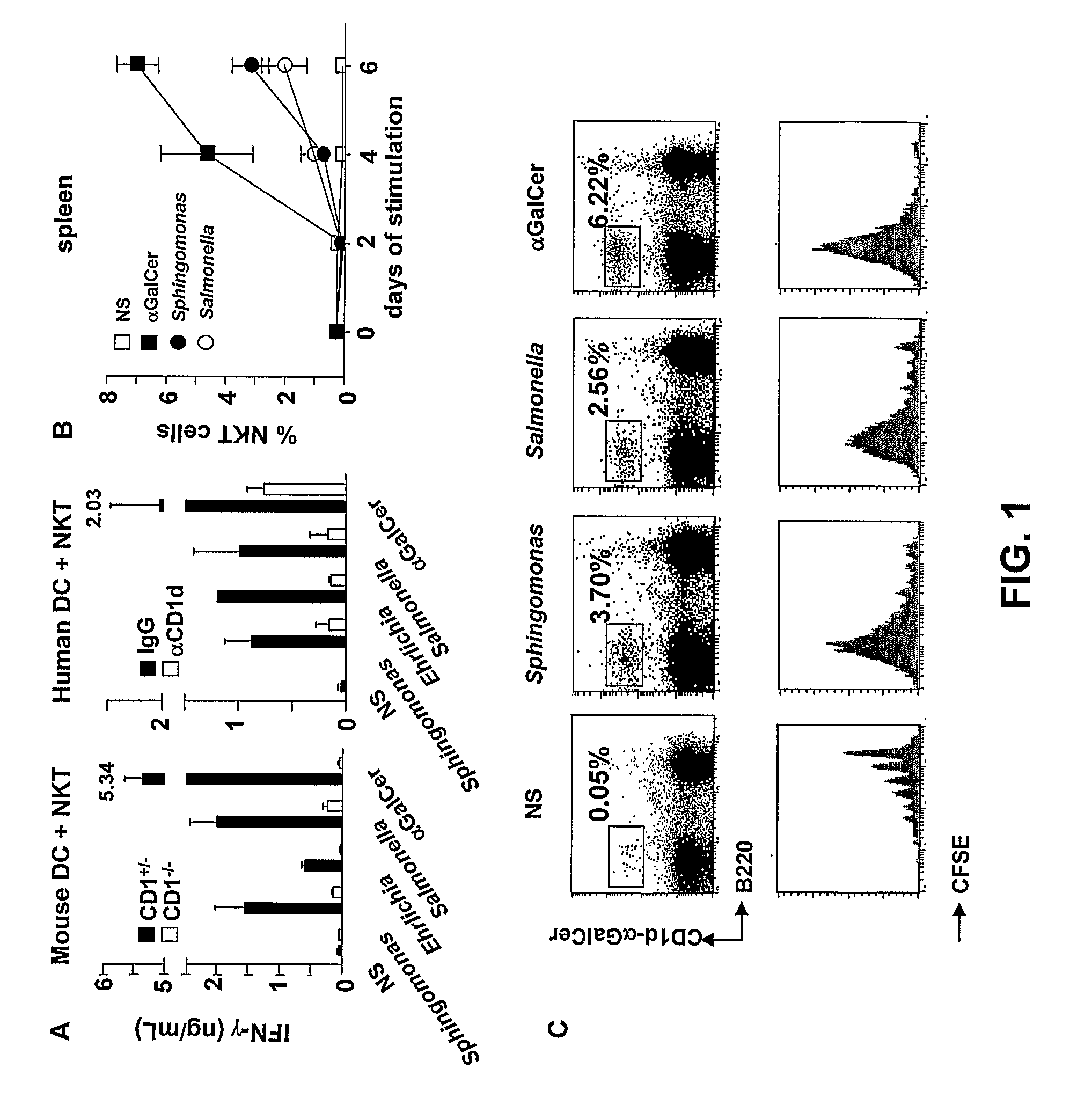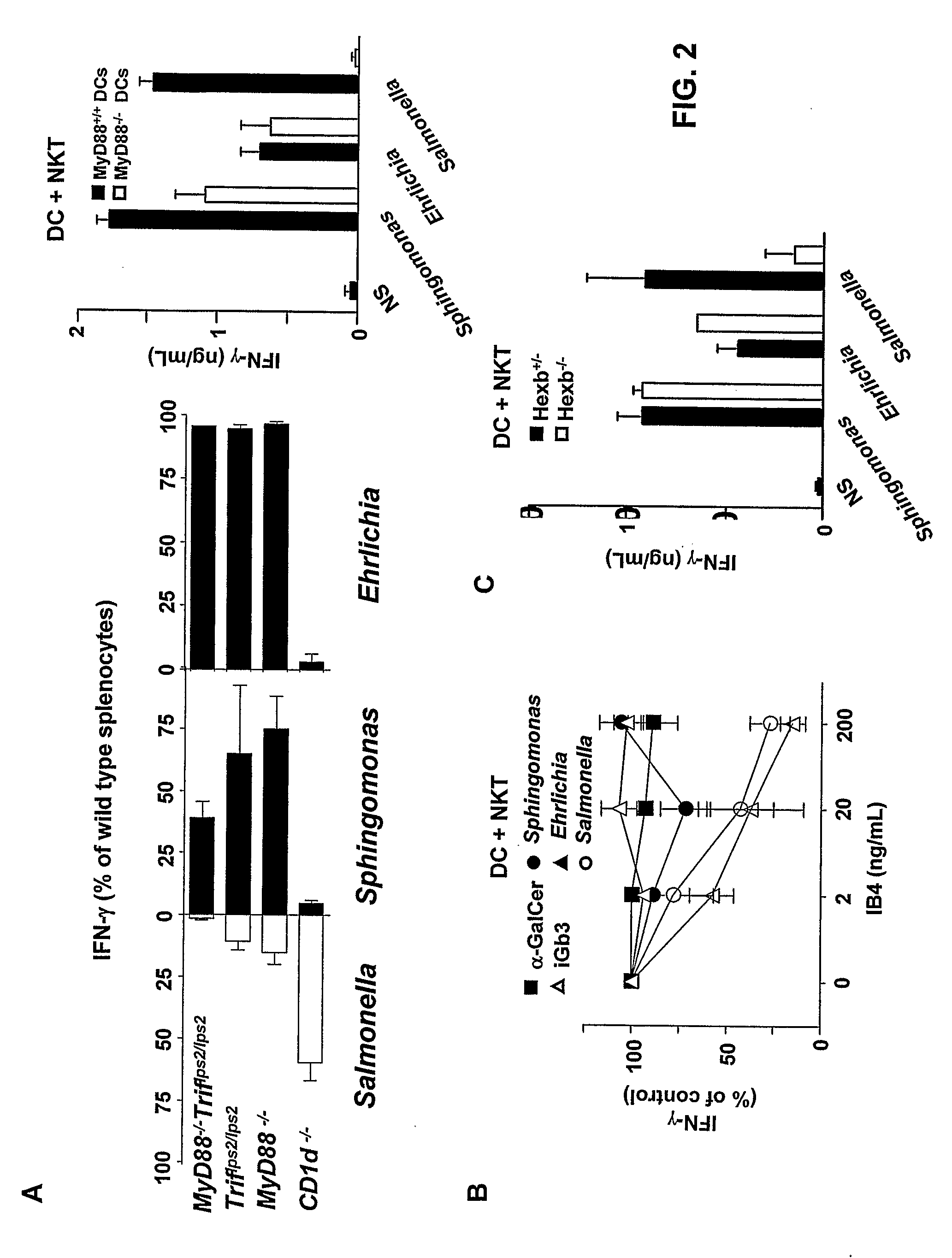Bacterial Glycolipid Activation of Cd1d-Restricted Nkt Cells
- Summary
- Abstract
- Description
- Claims
- Application Information
AI Technical Summary
Benefits of technology
Problems solved by technology
Method used
Image
Examples
example 1
In Vitro Stimulation of NKT Cells with Heat-Killed Bacteria
[0055]Bacterial strains Sphingomonas capsulata (ATCC 14666) and Salmonella typhimurium R71 were grown in Mueller-Hinton Agar. Ehrlichia muris were prepared as described by Ismail N et al., J. Immunol. 172, 1786-1800 (2004), incorporated herein by reference. Bacteria were heat killed by 2-hour exposure to 74° C. and 2.5-5×106 cfu equivalent / well were used for in vitro stimulation.
[0056]Stimulation assays were performed with whole spleen cells (5×105 per 200 μl well) or with purified T cells and antigen presenting cells. T cell populations used in the assays comprised sorted CD1d-Gal-Cer+ mouse spleen cells (5×104 per 200 μl well), human peripheral blood lymphocytes (PBL) (5×105 per 200 μl well) (obtained after Ficoll centrifugation of heparinized blood) or human NKT cell lines (2.5×105 per 200 μl well). Human Vα24 NKT cells were derived from PBL stimulated with αGal-Cer and were maintained by repeated rounds of stimulation wi...
example 2
Differential Requirements for the IFN-γ Response to Sphingomonas and Ehrlichia Versus Salmonella
[0061]Whole spleen cells co-cultured with DC of genotype MyD88− / −, Triflps2 / lps2 and MyD88− / −Triflps2 / lps2 (lacking one or the two adaptors MyD88 and TRIF for TLR signaling) or CD1− / − were stimulated for 48 hours with 5×106 heat killed Salmonella, Sphingomonas or Ehrlichia. Concentrations of mouse and human IFN-γ. in the supernatant were measured at 48 hours using the respective ELISA kits (BD Bioscience, lower detection limit of 12.5 pg / ml).
[0062]DC were pulsed with heat-killed bacteria, prepared as described in Example 1 and added to human NKT cell preparations in the presence of IB4 (Griffonia Simplicifolia isolectin B4) (Vector Laboratories) which binds the terminal disaccharide of iGb3, but does not bind to αGal-Cer. IFN-γ production was measured at 48 hours.
[0063]Hexb− / − DC, which fail to generate iGb3 in the lysosome because they lack the b-hexosaminidase needed to remove the term...
example 3
NKT Cell Stimulatory Response to Synthetic Glycolipid Antigens
[0068]α-glucuronosylceramide (PBS 30) and α-galacturonosylceramide (PBS 59), derived from known Sphingomonadaceae cell membrane antigens, were synthesized as described in Example 5. PBS 50, a β-glucuronosylceramide, served as a control compound. The structures of these compounds are shown in FIG. 3A.
[0069]The immunological properties of the above compounds in NKT cells were measured. Human Vα24-Jα18 NKT cells and fresh purified mouse NKT cells were co-cultured with DC pulsed with αGal-Cer or synthetic glycolipid at concentrations ranging from 0.001 to 1000 ng / mL. IFN-γ production was measured at 48 hours as described above.
[0070]CD1d tetramers were prepared as described in Example 1 using synthetic glycolipids PBS 30, PBS 59 and PBS 50 and αGal-Cer, and were used to stain human NKT cells and mouse spleen cells.
[0071]Results are shown in FIGS. 3 B-C. Both α-glucuronosylceramide (PBS 30) and to a lesser degree, α-galacturon...
PUM
| Property | Measurement | Unit |
|---|---|---|
| Immunogenicity | aaaaa | aaaaa |
| Hypersensitivity | aaaaa | aaaaa |
| Hyperproliferative | aaaaa | aaaaa |
Abstract
Description
Claims
Application Information
 Login to View More
Login to View More - R&D
- Intellectual Property
- Life Sciences
- Materials
- Tech Scout
- Unparalleled Data Quality
- Higher Quality Content
- 60% Fewer Hallucinations
Browse by: Latest US Patents, China's latest patents, Technical Efficacy Thesaurus, Application Domain, Technology Topic, Popular Technical Reports.
© 2025 PatSnap. All rights reserved.Legal|Privacy policy|Modern Slavery Act Transparency Statement|Sitemap|About US| Contact US: help@patsnap.com



